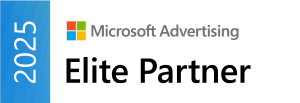The Google Ads contact form helps you get the contact details of potential customers directly from text ads. For now, this solution has been launched in beta in almost 60 countries. It is addressed only to users of mobile devices, both those with Android and iOS.
It’s hard not to get the impression that Google has modeled on the solution previously introduced on Facebook. Facebook Lead Ads work very similarly, they also have an identical role — leading potential customers directly to the advertiser. Interestingly enough, Google emphasizes that the data provided to companies as part of the Google Ads contact form won’t be used to personalize the displayed ads.
Google’s requirements
The Mountain View giant places a number of requirements on advertisers who want to use the new extension.
- First, the form should include the company’s privacy policy so that customers can read it before providing their personal data.
- Secondly, contact info of potential customers will be automatically deleted after 30 days, therefore you should copy it regularly so that you don’t lose anything. Contacts can be exported to a CSV file.
- The name of the company in the contact form must not be misleading, illegible or with promotional content attached (e.g. a CTA).
- It is not allowed to use the form to promote sexual content or one related to drugs, alcohol, gambling, healthcare, and politics.
- The information in the advertisements must be accurate, and the products and services themselves must be available in the company’s offer.
Notably, the search engine offers the possibility of integrating the contact form with the advertiser’s CRM system. This is done via a webhook (an API that sends contact details from Google forms to CRM in real-time). Detailed instructions on how to connect CRM to a webhook can be found here.
Measuring forms’ effectiveness
It should be noted that contact forms don’t function as stand-alone, separate ads, but only as an extension of existing text ads. Therefore, targeting and bidding settings do not change.
Every time a potential customer opens a contact form, Google will count it as a lead. Each time the customer enters his data, it will be counted as a conversion. Submitting completed forms from potential customers is the only type of conversion that will be assigned to the form. Other conversion actions won’t be reported if potential customers click the form extension. For example, if someone clicked your order form and later bought something on your site, the conversion won’t be attributed to the form. In addition, these conversions won’t be visible in Google Analytics.
Users can check the effectiveness of clicks and conversions at any time by simply filtering the performance report by “clicks” and “conversion type”.
How to set up a contact form in your campaigns?
Google has prepared a detailed step-by-step instruction, it’s available here. In the campaign settings, the “Ad extensions” list, you can select the “Contact form extension” option. In the next steps, you configure the settings and parameters of the form, including the CTA (possible options are e.g. more information, check the price, submit an application, contact, register, book now) and type the extension text. Interestingly, the CTA will be automatically translated into the recipient’s language, while the extension text will not.
In the next steps, add the company name, form the header and description. Then you need to indicate the type of data you want to get from the potential customer (you only need to indicate one option, e.g. email address). Careful! It won’t be possible to edit this data, so you should think about what information you care about. It’s also possible to embed a photo in the background of the form. The image must comply with Google Ads standards and the graphics can’t be blurred.
The last step before accepting the form is to prepare the content of the message confirming that the form has been sent.
A step in the right direction?
For a long time, Google has been successively striving to provide its users with as many opportunities and amenities as possible without leaving the search engine. This is another step in this direction. Since forms are a relatively new solution (interestingly, the first tests of a similar solution took place already in 2010), it’s difficult to assess at this stage how successful they will be.
A large part of customers may be concerned about the security of contact details they provide, and on the other hand, it’s a quick and convenient way to express their interest in a particular product or service. Certainly, advertisers who focus on online queries from customers should test run contact forms and assess their effectiveness.





